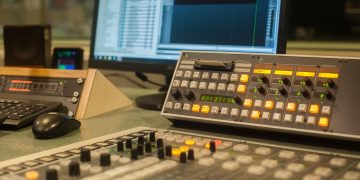The warmer days of spring and summer bring many to San Diego in search of strolls on the beach and fun destination spots.
And with SeaWorld poised to set-off a crackling jubilee of fireworks from Mission Bay this spring and summer, environmentalists will be watching to make sure debris from the fireworks doesn’t harm the surrounding marine life, keeping the region’s natural and manmade waterways as clean as possible.
The San Diego Regional Water Quality Control Board issued SeaWorld a special permit in December allowing the park to continue the seasonal fireworks show so long as park officials monitor potential pollutants falling into Mission Bay and surrounding waterways.
The board approved the National Pollution Discharge Elimination System permit with a 6-1 vote. It was the first of its kind issued for fireworks discharges under the federal Clean Water Act, according to a statement issued by San Diego Coastkeeper.
The permit requires SeaWorld officials to collect and analyze water, sediment and marine life in Mission Bay three times a year for the next three years, said SeaWorld spokesperson David Koontz.
Koontz said park officials have already been monitoring the fireworks discharges into the bay for the past five years under a similar program.
“We’ve monitored a number of metals and elements and constituents to see if there [were] any elevations in the bay,” he said. “It was shown that there was no negative impact on the quality of the bay as a result of our fireworks.”
But representatives from environmental group San Diego Coastkeeper said they aren’t so sure the debris from the fireworks is harmless and wants the park to follow the law.
“You’re discharging into the bay. You don’t have a permit. All discharges into a waterway are supposed to have a permit under the Clean Water Act,” said Bruce Reznik, Coastkeeper’s executive director. “So get your permit. Do your monitoring and we’ll be able to properly evaluate whether those displays are harming marine life or not.”
In 2006, Coastkeeper threatened to sue SeaWorld’s parent company Anheuser-Busch if SeaWorld didn’t take action to comply with the Clean Water Act.
The notice brought the fireworks to a haul about two weeks early that year and gave SeaWorld officials 60 days to apply to the Water Quality Control Board for the permit ” which they did.
“We never actually filed the lawsuit because [applying for the permit] was the outcome we we’re seeking,” said Gabriel Solmer, a legal director with Coastkeeper.
She said under the permit SeaWorld would check bay water samples three times a year immediately after its biggest displays. Analysts would check for potential contaminants such as copper, zinc and perchlorates ” which she said are chemicals found in rocket fuel used to propel the fireworks.
With the permit in place, SeaWorld has launched their Spring into Night events complete with extended hours and the “SkyBlast” fireworks show.
According to a statement released by SeaWorld, the park will stay open from 9 a.m. to 9 p.m. with nightly fireworks displays starting Saturday, March 15, through Sunday, March 30.
The fireworks will also light up the weekend nights starting Saturday, April 5, through Sunday, May 18, officials said.
The display returns to a nightly run staring Saturday, June 14, through Labor Day weekend.












Discussion about this post